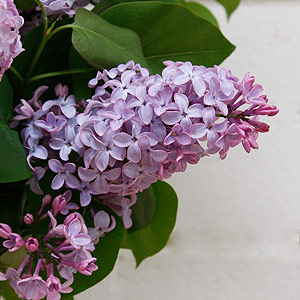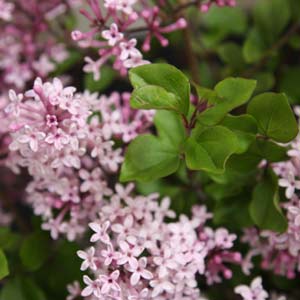
The common lilac bushes (Syringa vulgaris) are a fragrant flowering multi stemmed deciduous shrub. A number of varieties are available including some lower growing dwarf types.
They come in a number of varieties with flower colour varying
Lilac Care
Lilacs do well when a layer of mulch is placed around the plant but kept back from the stems or base itself, this not only suppresses weeds but also keeps the soil moist, lilacs love it.
- Soil Type
Humus rich, moist but well drained soil. - Position
Full Sun - Container growing
Lilacs are suited to container growing if pruned regularly. - Fertilizer
Fertilise lilacs lightly with an all purpose fertilizer in early spring. Repeat this in summer after the flowers have disappeared.

Lilac Varieties
- Syrina vulgaris – Common Lilac
- Syringa persica – Persiam Lilac
- Syringa palebinina – Dwarf Korean Lilac
- Syringa x josiflexa ‘Bellicent’
Pruning Lilacs
Lilacs are easily pruned and can be hard pruned back to 1/3rd of the height each year. They can also be trained as standards if required.
Older plants can be regenerated by cutting back hard, best done 1/3 at a time. Remove 1/3 of the oldest canes the first year, along with any thin spindly growth. The next year remove the second 1/3 and again any canes that show weak growth. Complete this in the third year.
You can prune the whole plant hard in one year, however this will mean no flowers for a few years.
Summary Information
- Botanical Name : Syrina vulgaris
- Common Name : Lilac, Lilac Bush
- Family Name :
- USDA Zone : 3 – 7
- Height : 3 – 15 ft
- Spread : Width of around 8 ft
- Growth Rate : Medium to Fast
- Flowering Time – Spring
- Flower colour – Lilac purple to white and burgundy.
- Soil : Humus rich, moist and well drained loamy soil
- Light : Full sun to a little afternoon shade.
- Humidity : Medium
- Container Growing : Yes for smaller varieties
- Frost Tolerance : Yes
- Drought Tolerant : Medium
Problems – Diseases
Lilacs are relatively pest and disease free, aphids can be a minor problem, as can powdery mildew, but these are easily treated.
No flowers
- Usually due to over fertilization which causes vegetative growth rather than flowers. Also caused by to much shade which can inhibit flower formation. Also caused by pruning incorrectly.
- As lilacs flower on old wood, last seasons growth, if you prune in fall you will be removing the next lot of flowers buds, so prune just after flowering.
Lilac Root systems
Lilacs have a reasonably vigorous root system and should be planted away from drainage lines.
Lilac Trees are available for sale from the following specialist nurseries.
BIG DIPPER FARM – Phone 360.886.8133
26130 SE Green Valley Rd Black Diamond, WA 98010

